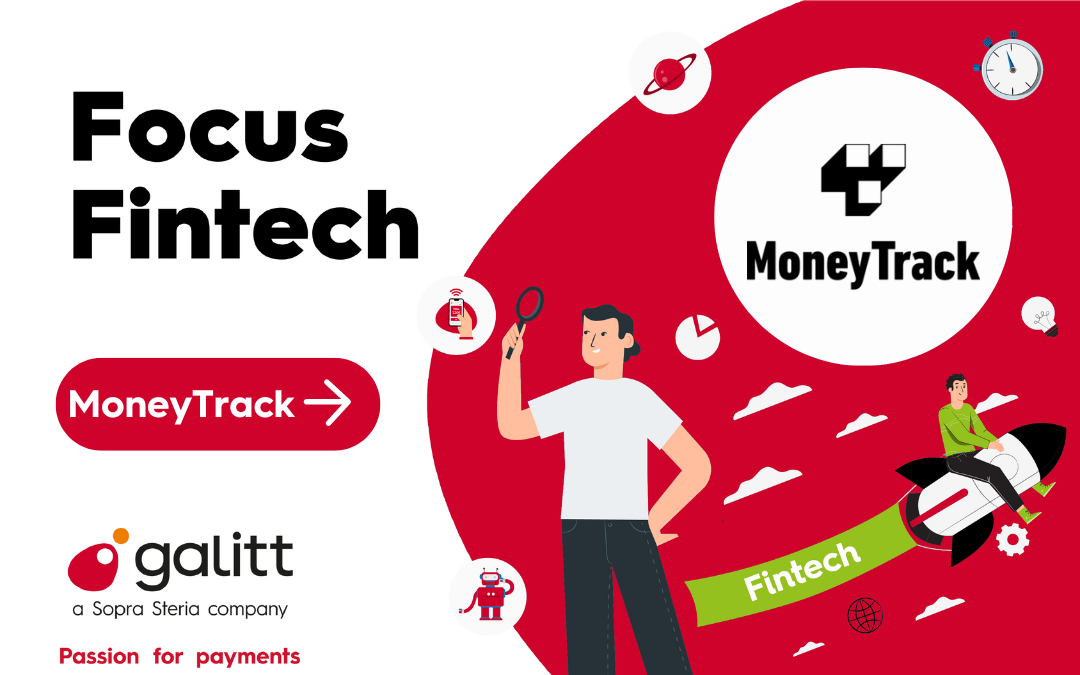[et_pb_section fb_built=”1″ _builder_version=”4.6.6″ _module_preset=”default” custom_padding=”||0px|||”][/et_pb_section][et_pb_section fb_built=”1″ _builder_version=”4.6.6″ _module_preset=”default” custom_padding=”0px|||||”][et_pb_row _builder_version=”4.6.6″ _module_preset=”default” custom_padding=”0px|||||”][et_pb_column type=”4_4″ _builder_version=”4.6.6″ _module_preset=”default”][et_pb_post_title meta=”off” _builder_version=”4.6.6″ _module_preset=”default”][/et_pb_post_title][et_pb_image src=”https://www.galitt.com/wp-content/uploads/2022/07/Image1.png” alt=”Skaleet 1 ENG” title_text=”Image1″ align=”center” _builder_version=”4.6.6″ _module_preset=”default” hover_enabled=”0″ sticky_enabled=”0″][/et_pb_image][et_pb_text _builder_version=”4.6.6″ _module_preset=”default” min_height=”57px” custom_margin=”50px||0px||false|false” custom_padding=”||0px||false|false”]
Today, about 90% of Software-as-a-Service (SaaS) companies lean on a subscription-based revenue model. Whether by bank transfer or card payment, all SaaS companies charge their customers repeatedly for the software they provide. Hence, these companies look to optimize the pricing and billing operations to improve customer acquisition and retention rates. It triggers a new way of looking at payment monetization by SaaS companies.
In addition, a new wave of SaaS solutions dedicated to vertical markets (i.e., software and service offerings around a specific industry, such as food and beverage or sports) has emerged. In these vertical markets, SaaS companies have been the first to adopt a “Win-Win” dynamic by addressing the needs of a specific industry while embedding financial solutions. Toast and Shopify were the first vertical SaaS companies to tout financial services. They integrated them into their product and even went beyond simple payment services by offering payment cards, loans, and insurance offers.
SaaS players can rely on specialized infrastructures from fintech to offer these new services. Software-as-a-Service companies could dramatically increase their revenue per customer by a potential factor of 2-5 through fintech integration. The winning approach for these vertically oriented companies will be to integrate financial services, specifically payments, to acquire new customers, and increase revenue while reducing churn.
[/et_pb_text][et_pb_text _builder_version=”4.6.6″ _module_preset=”default” custom_margin=”50px||0px||false|false” custom_padding=”||21px|||”]
The Great Verticalization of SaaS
[/et_pb_text][et_pb_text _builder_version=”4.6.6″ _module_preset=”default” custom_padding=”||0px|||”]
Every ten years, the way SaaS software is distributed and sold evolves. Each evolution – from setting up to subscription to bottom-up approach – creates new markets, often by expanding the customer base from small and medium-sized businesses to large corporations. This new generation of SaaS companies is ambitious, marked by the desire to achieve rapid growth: Shopify and Toast are perfect examples.
Their goal is to serve small and medium-sized businesses (SMBs) in a specific industry (e.g., food service, marketing, or construction) with highly customized features and customer experiences. In addition, they have quickly become recording systems for their customers, providing single platforms for services such as CRM, inventory management, accounting, HR management systems, etc. These vertical markets have become good candidates for creating a SaaS + Fintech business model. If a SaaS vertical becomes predominant in a particular industry, it can offer additional services, including:
- Traditional SaaS extension – up-selling software products or adding additional modules
- The Fintech opportunity – adding financial services, such as payments, cards, loans, bank accounts, compliance management, or payroll.
[/et_pb_text][et_pb_text _builder_version=”4.6.6″ _module_preset=”default” custom_margin=”50px||0px||false|false” custom_padding=”||21px|||”]
Embedded Finance improves margins and makes the product stickier
[/et_pb_text][et_pb_text _builder_version=”4.6.6″ _module_preset=”default” custom_padding=”||0px|||”]
Some SaaS verticals are looking to integrate financial services, specifically payments into their product. This strategy allows to:
- Increase revenues: the idea is to go beyond the traditional revenues of the SaaS world (with only a subscription model).
- Cross-sell: market the payment products to existing SaaS customers without additional customer acquisition costs.
- Reduce churn: By providing a complete solution tailored to customer needs with a reduced churn.
Initially, SaaS verticals added financial services by reselling the services of a third-party partner. However, with the new players in the fintech infrastructure, companies can now move from reselling to integrating financial services directly into SaaS products. Certainly, reselling is a reliable option that allows for a quick launch of a new service. However, direct integration delivers higher margins while providing a more seamless customer experience. With an integrated service, vertical SaaS solutions can leverage a proprietary data set from all services used to tailor to customer needs and risk profiles.
[/et_pb_text][et_pb_text _builder_version=”4.6.6″ _module_preset=”default” custom_margin=”20px||0px||false|false” custom_padding=”||0px|||”]
The emergence of Embedded Payments
While financial services add value for customers, the SaaS vertical acquires and retains customers through its differentiated solution, not through banking products. When a SaaS offering is largely adopted, it’s the right time to launch financial products.
As a result, many companies have waited until their core business has grown before they can monetize payments. Initially, Shopify launched without a payment product and primarily provided software to help small and medium-sized businesses to create e-commerce websites to manage their online storefronts. Shopify executives realized merchants needed to process payments and go through a third party – i.e., an often complicated and painful process. So Shopify decided to leverage Stripe’s APIs to make it easier for merchants to manage payment flows.
While payments were the first Embedded Finance services to emerge, the multitude of embedded financial services is globally an under-exploited opportunity. Other services can be included, such as loans, cards, and insurance offerings. However, payment processing is the easiest option for vertical SaaS solutions to integrate. Another opportunity is white-label payments from payment service providers. However, these services’ monetization can be challenging due to additional markup fees. So, vertical SaaS solutions that have chosen this option may have sufficient transaction volume to negotiate with their PSP; they may also offer to transact via other payment methods on the platform.
Other companies have decided to integrate payments and become payment facilitators themselves (“PayFacs“). PayFacs play an active role in payment processing and can capture percentages of transaction volumes in exchange for taking on the risks and operations associated with collecting payments. Infrastructure fintechs enable SaaS companies to become PayFacs. It also requires reaching a certain economic level to devote resources to licensing, auditing, transaction and risk management issues, etc. If a SaaS vertical is global, it must take into consideration few challenges: the sales channels with both online and in-stores, the geography, and the adaptation to the different local and regional rules.
[/et_pb_text][/et_pb_column][/et_pb_row][et_pb_row _builder_version=”4.6.6″ _module_preset=”default”][et_pb_column type=”4_4″ _builder_version=”4.6.6″ _module_preset=”default”][et_pb_text _builder_version=”4.6.6″ _module_preset=”default”]
Different strategies for integrating payments into your vertical SaaS solution
[/et_pb_text][et_pb_text _builder_version=”4.6.6″ _module_preset=”default”]
N°1: Mark up transactions on your platform
[/et_pb_text][et_pb_text _builder_version=”4.6.6″ _module_preset=”default”]
Merchants using a SaaS solution accept payments from their customers (via a payment service provider, for example), so they have the option of integrating payment processing directly into the SaaS platform to facilitate the acceptance of these payments. By processing payments on behalf of merchants and marking up transactions as they pass through the system, it is possible to make merchants’ lives easier while enabling them to generate a whole new revenue stream.
When a customer pays, the behind-the-scenes transaction is shared between the merchant and the SaaS vertical. It may sound simple, but with thousands, if not millions, of transactions flowing through the SaaS platform, this strategy generates substantial revenue.
[/et_pb_text][et_pb_image src=”https://www.galitt.com/wp-content/uploads/2022/07/Image2.png” alt=”Skaleet 2 ENG” title_text=”Image2″ align=”center” _builder_version=”4.6.6″ _module_preset=”default” hover_enabled=”0″ sticky_enabled=”0″][/et_pb_image][et_pb_text _builder_version=”4.6.6″ _module_preset=”default”]
N°2: Offer your SaaS platform for free and generate revenue through payments over time
[/et_pb_text][et_pb_text _builder_version=”4.6.6″ _module_preset=”default”]
This strategy goes further than the previous one. So, it involves monetizing payments while providing a free SaaS platform. It will capture market share faster, create a “must-have” product and maximize revenue over time. The benefits of this strategy are:
- Increasing the “Lifetime value” with usage revenues;
- Reduced customer acquisition costs;
- Reducing churn while opening up new payment-centric offering opportunities (the marketplace).
Let’s take the example of a restaurant with €1 million in sales that pays €10,000 per year to use a SaaS platform. At the same time, it pays €25,000 to a payment service provider to handle the payments. This could be the SaaS platform. Moreover, the SaaS player is not obliged to provide its platform for free. It is also possible to develop a flywheel by lowering the subscription price of the vertical SaaS solution to attract more customers.
[/et_pb_text][et_pb_image src=”https://www.galitt.com/wp-content/uploads/2022/07/Image3.png” alt=”Skaleet 3 ENG” title_text=”Image3″ align=”center” _builder_version=”4.6.6″ _module_preset=”default” hover_enabled=”0″ sticky_enabled=”0″][/et_pb_image][et_pb_text _builder_version=”4.6.6″ _module_preset=”default”]
N°3: Become a PayFac = a payment facilitator!
[/et_pb_text][et_pb_text _builder_version=”4.6.6″ _module_preset=”default”]
A payment facilitator, also known as a PayFac, is a specialized aggregator/merchant account and has the privileges of a payment processor. Payment facilitators can subscribe to sub-merchants, process transactions, manage disputes, and place payment orders on behalf of those sub-merchants. Integrating these benefits internally further reduces costs and increases revenue while having greater control over the product and customer experience.
Toast provides a SaaS restaurant and point-of-sale management platform to manage day-to-day operations and create a better customer experience. Toast is also a payment facilitator, and its customers, the restaurants, are sub-merchants. Historically, restaurants would have had to have three providers to cover Toast’s business, i.e., a SaaS solution for reservations, a bank or payment service provider to collect payments, and, finally, a hardware provider to accept payments at the point of sale.
What to keep in mind: There is still plenty of space for payments in the SaaS vertical, and the next payment wave will see more PayFacs emerge. In addition, many software providers integrating payments will have even more complex payment workflows to consider, such as managing multiple stakeholders. As a Core Banking Platform and payment orchestration specialist, Skaleet believes integrating payments into vertical SaaS businesses is the logical step toward growth. Skaleet supports any SaaS vertical in their payment enabler (“PayFac”) project to process their payments and create custom workflows. For organizations betting on the latest strategy requiring payment component integration, this solution is a prime recommendation for facilitating sub-merchant management, managing disputes, and processing payment orders while reducing costs and creating new revenue streams.
[/et_pb_text][/et_pb_column][/et_pb_row][et_pb_row _builder_version=”4.6.6″ _module_preset=”default”][et_pb_column type=”4_4″ _builder_version=”4.6.6″ _module_preset=”default”][et_pb_text _builder_version=”4.6.6″ _module_preset=”default”]
About Skaleet
[/et_pb_text][et_pb_text _builder_version=”4.6.6″ _module_preset=”default”]
Skaleet is an international FinTech providing Core Banking Platform, allowing financial institutions to quickly launch new banking products and new experiences at a competitive price. Complying with the highest security standards, it already powers 25+ regulated financial institutions and manages 8+ million banking accounts worldwide. The solution combines an open, modular, and cloud-agnostic technology. Banks and Financial Institutions can develop and create their personalized features relying on an ecosystem of best-of-breed partners and Skaleet agility.
[/et_pb_text][/et_pb_column][/et_pb_row][et_pb_row _builder_version=”4.6.6″ _module_preset=”default”][et_pb_column type=”4_4″ _builder_version=”4.6.6″ _module_preset=”default”][et_pb_blog fullwidth=”off” posts_number=”3″ use_manual_excerpt=”off” excerpt_length=”0″ show_author=”off” show_categories=”off” show_excerpt=”off” show_pagination=”off” _builder_version=”4.6.6″ _module_preset=”default” custom_margin=”20px||||false|false” border_width_all=”0px” box_shadow_style=”preset1″ box_shadow_blur=”14px” box_shadow_spread=”-5px” box_shadow_color=”rgba(0,0,0,0.15)” locked=”off”][/et_pb_blog][/et_pb_column][/et_pb_row][/et_pb_section]




